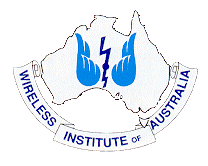
VK3HJQ


EMR Page





 Electromagnetic Radiation
Electromagnetic Radiation


This kind of radiation is pure energy with no mass and is like vibrating or pulsating waves of electrical and magnetic energy. Electromagnetic waves are produced by a vibrating electric charge and as such, they consist of both an electric and a magnetic component. In addition to acting like waves, electromagnetic radiation acts like a stream of small "packets" of energy called photons. Another way that electromagnetic radiation has been described is in terms of a stream of photons. The massless photon particles each travel in a wave-like pattern. Each photon contains a certain amount (or bundle) of energy, and all electromagnetic radiation consists of these photons. The only difference between the various types of electromagnetic radiation is the amount of energy found in the photons. Electromagnetic radiation travels in a straight line at the speed of light (3 x 108 m/s).
EMR Software by VK3UM
Site radiation calculator & graph software
http://www.vk3um.com/emr calculator.html

WIA EMR update for VK.

http://www.wia.org.au/members/technical/emr/
New EMR regulations
Regulations that set limits for human exposure to electromagnetic radiation (EMR) for the Amateur Service have now begun. The regulations cover all apparatus licence transmitters and came into effect on the 1st of March, although some commercial radio systems have been given time to adjust to comply with the new limits.
The Wireless Institute of Australia as previously reported considers the EMR limits are not onerous for the average radio amateur and amateur station. An article on the EMR exposure limits appeared in the February edition of Amateur Radio magazine.
The Amateur Licence Condition Determinations (LCD) have been amended to reflect the new EMR limits that ensure a transmitter is operated at safe levels for general public exposure to radiation.
WIA Victoria News on-line www.wiavic.org.au/news
Radiocommunications Licence Conditions (Apparatus Licence) Determination 2003
Web Site: http://www.aca.gov.au/legal/determin/lcd/applcd2003.htm
Download: http://www.aca.gov.au/legal/determin/lcd/applcd2003.rtf
EMR limits further delayed
The Australian Communications Authority (ACA) had planned to implement the EMR human exposure limits through the Licence Condition Determinations for apparatus licences including amateur stations.
However, the ACA has now advised the WIA that it has decided to delay the issuing of the new Licence Condition Determinations to mandate the EMR exposure limits, until it can formally adopt a new radiation exposure standard.
The Australian Radiation Protection and Nuclear Safety Agency has developed a new Radiation Protection Standard Maximum Exposure Levels to Radiofrequency Fields 3kHz to 300 GHz.
The EMR limits that have been proposed by the ACA are based on the lapsed Australian and New Zealand Standard AS2772.1 - and not the new standard.
In practice, there is little difference between the two standards, at least as far as the Amateur Service is concerned.
The adoption of the new standard won't significantly change the EMR limits already proposed by the ACA and publicised in the June edition of Amateur Radio magazine.
In the meantime the WIA recommends that radio amateurs continue to be sensible with the use of RF energy, and keep in mind the proposed EMR limits when installing antennas.
ACA EMR rules now out.
The Australian Communication Authority has released its long-
awaited document on how the new electromagnetic radiation rules
will apply to amateurs. The 17-page document can be downloaded
from the ACA website. The rules come into effect on 1 July 2002.
www.aca.gov.au/standards/emr/amateur.pdf
26th June 2002
Will your station meet EMR requirements?
The mandatory EMR controls, limiting the public's exposure to radio frequency radiation from amateur transmitters, already apply to other radio transmitters including mobile phones operating between 3kHz and 300GHz.
The general public will become aware of the soon to be introduced EMR controls, through a series of newspaper advertisements placed by the (ACA), which are certain to put amateur stations in the spotlight.
Compliance Requirements:
The proposed framework defines two levels of compliance action.
Compliance Level 1 - applies to transmitters that are covered by either of the following conditions:
(a) The total average power fed to all antennas at the site must not exceed 100 watts and antennas must be out of reach.
(b) The bottom of the lowest antenna must be at least 10 metres above ground and the average EIRP does not exceed 3200 watts.
Compliance Level 2 - which requires measurements and documented proof of compliance, applies to all other transmitters.
EMR in licence conditions
It is proposed that the new regulatory framework, to be reflected in
the Licence Condition Determinations (LCDs) for the Amateur Service
(and to all apparatus licences), will begin on 1 July, 2002.
That means that amateur stations operated under new amateur licences issued on or after that date, must comply with the framework. Existing licensees will have until 1 October, 2002, to comply.
A detailed article will be published in the June edition of the WIA journal, Amateur Radio magazine.
WIA Victoria News on-line www.wiavic.org.au/news
VK3HJQ Home Page

© vk3hjq 2001-2022 All Rights Reserved. vk3hjq@hotmail.com